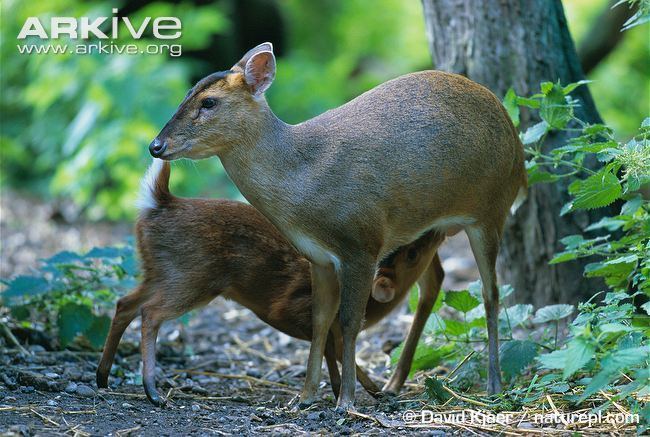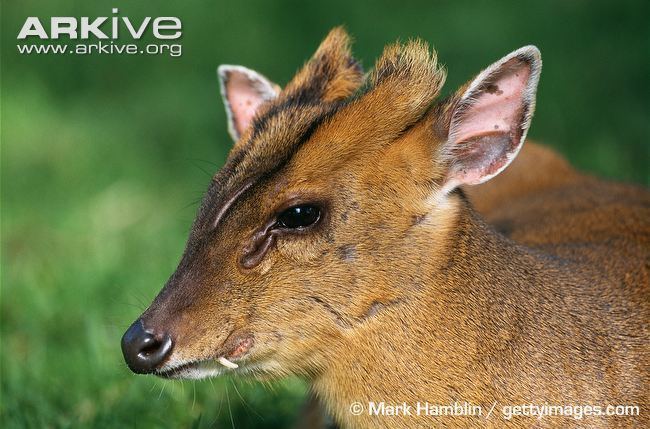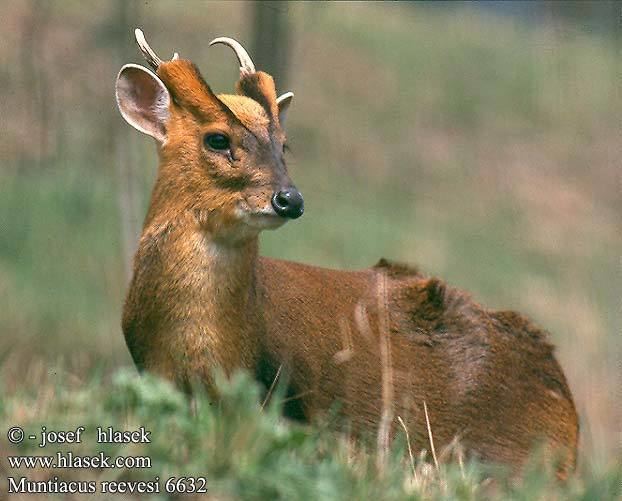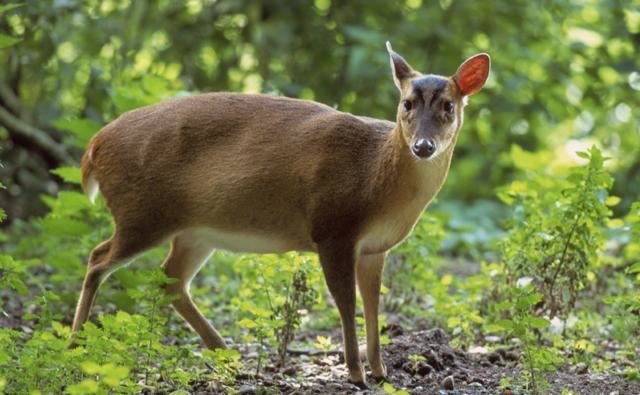Order Artiodactyla Scientific name Muntiacus reevesi Rank Species | Phylum Chordata Family Cervidae Genus Muntiacus Higher classification Muntjac | |
 | ||
Similar Muntiacini, Deer, Indian muntjac, Mammal, Water deer | ||
Reeves s muntjac at walt disney world animal kindom
Reeves's muntjac (Muntiacus reevesi; Chinese: 山羌) is a muntjac species found widely in southeastern China (Gansu to Yunnan), Taiwan, Bōsō Peninsula on Honshu and Izu Ōshima. It has also been introduced in Belgium, the Netherlands, the United Kingdom (south England, the Midlands, and east Wales) and Ireland by 2008. It feeds on herbs, blossoms, succulent shoots, grasses and nuts, and was also reported to eat trees. It takes its name from John Reeves, who was appointed Assistant Inspector of Tea for the British East India Company in 1812.
Contents
- Reeves s muntjac at walt disney world animal kindom
- Indian muntjac or barking deer
- Description
- Reproduction
- Introduction into UK and Japan
- Conservation
- References

Indian muntjac or barking deer
Description

This muntjac grows to 0.5 metres (1 ft 8 in) high at the shoulder, 0.95 m (3 ft 1 in) in length, and weighs between 10 and 18 kilograms (22 and 40 lb) when fully grown. It is dog-like in appearance but has striped markings on its face. The male has short antlers, usually four inches or less, and uses them to push enemies off balance so he can wound them with his upper two inch canine teeth. The Taiwanese subspecies (M. r. micrurus), commonly known as the Formosan Reeves' Muntjac, is relatively dark compared to the other subspecies.

Reeves's muntjac is also called the barking deer, known for its distinctive bark, though this name is also used for the other species of muntjacs.

The Reeves's muntjac preferred habitats are forest and shrubland. It is a solitary and nocturnal animal, feeding on tree leaves, grass and fruits.
The tanned skin of Reeves's muntjac is notable for its softness and is occasionally used for specialist application like beauty care product, musical instruments, lenses and antique items packaging. Low-fat muntjack meat is also noted for its culinary qualities.
Reproduction
Female muntjacs (known as "does") become sexually mature within the first year of life. Mating occurs throughout the year. Gestation period lasts from 209 to 220 days. Females limit the number of mating bouts, though time between successive bouts is determined by males (known as "bucks").
Introduction into UK and Japan
An unspecified species of Reeves's muntjac was introduced to the grounds of Woburn Abbey in Bedfordshire in the nineteenth century by the then Duke of Bedford. While a small number are reported as escaping, it is extremely unlikely that they are the source of the current UK population. Larger numbers of Reeves's muntjac escaped from Whipsnade Zoo, and they are the more likely ancestors, in addition to other releases.
Since the Wildlife and Countryside Act 1981, it has been illegal to release the species except where already established. Reeves's muntjac colonies exist throughout England south of Derbyshire, and the population continues to grow. In Ireland, the first sightings of muntjac in 2008 caused the Government, concerned at the risk of the species becoming established, to quickly introduce an all year round hunting season.
The Reeves's muntjac was introduced in Japanese Bōsō Peninsula after several specimens escaped the exhibition zoo in 1960-1970 period. As in 2017, the Reeves's muntjac numbers on Bōsō Peninsula reached at least 60000 and it is considered a harmful invasive species. In particular, the muntjac has inflicted severe damage to the Ashitaba plantations. Also, the Reeves's muntjac group has escaped zoo on Izu Ōshima in 1970 when the fence fell due typhoon. The muntjac eradication company on Izu Ōshima was performed in 2007-2014 but completely failed, with at least 11000 specimens and yearly population growth rate of 15% as in 2014. This failure exposed the inadequate survey methods strongly under-estimating the population of these nocturnal species.
Conservation
In Hong Kong, it is a protected species under Wild Animals Protection Ordinance Cap 170. Overall though it generally remains common and widespread, resulting in it being listed as Least Concern by the IUCN.
